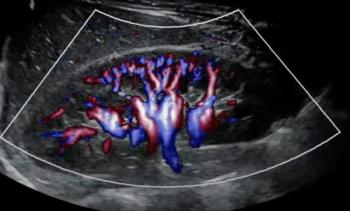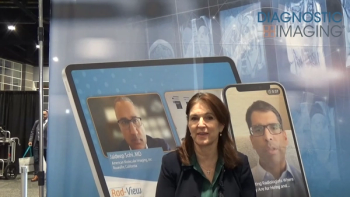
For Best Practices in Radiology, Look to IT
CHICAGO-Experts at RSNA 2015 look to data to improve care.
“We are facing a perfect storm” in regards to current pressure on radiologists from many different sides to control costs, and measure quality while shifting from fee for service to fee for value models, Michael E. Zalis, MD, associate professor of radiology at Harvard Medical School, said at RSNA 2015,.
As a result, he said, many radiologists are “rebelling against the accelerating treadmill they are being forced to run on” and are looking for ways to avoid commoditization through the use of advanced health record technology as well as advanced decision support tools.
“Complex information increasingly drives radiology practices,” Zalis said. And yet, the current state of the he electronic health records (EHR) systems that are meant to be the health IT backbone to provide data rendering is limited,” to Zalis said. He attributed this to many factors, including the limited awareness of patient context, little to no machine learning to adapt behavior, and the limited human ability to tailor data to the radiologist’s needs, which results in extra labor and more frustration.
Currently, “over 70% of data in an EHR is unstructured notes that are rich with patient information but that are unable to be put into use by the radiologists,” he said. There is a current need for IT tools that would allow this information to add to the value of radiology reports and move from a data/information model towards knowledge-based IT that intuitively predicts needs. This move from an overly static document focus to a more patient centered learning document is expected to evolve rapidly.
The platform Queriable Patient Inference Dossier (QPID) is one emerging IT tool that uses the EHR search engine to develop queries and allow you to build a system driven by search. The goal of QPID is to speed up the retrieval of EHR information while improving efficiency through customized search queries, thereby better integrating information into the radiologist’s workflow.
“While we are moving from volume to value, we are also moving from personal knowledge to population knowledge,” said Arun Krishnaraj, MD, University of Virginia. “We are moving to an era of information based radiology.”
EHR platforms, such as QPID, have the ability to access and categorize information that consistently reported a 20% faster efficiency rate while improving safety and value of imaging services, Krishnaraj explained.
CDS tools are another way to have information at your fingertips to aid decision making.
“Relevant clinical information provides context during interpretation while reducing error through automation,” according to Cree Gaskin, MD, associate professor, University of Virginia. Such tools available through third party software can mine data from the RIS/EHR to provide fast, tailored, and reliable data up to the minute.
Decision support tools (DST) are another IT-based method that improves safety and efficiency through precise imaging using algorithms that automate the right imaging for the right patient at the right time.
“It is simply not possible for radiologists or even cardiologists to know at the point of care what the right decision process algorithm is,” said Giles W. Bolland, MD, Harvard Medical School. By building algorithms using published evidence and consensus, identifying high impact for key imaging procedures and implementing once tested, IT tools are the key to best practices.
[[{"type":"media","view_mode":"media_crop","fid":"43792","attributes":{"alt":"","class":"media-image","id":"media_crop_4174822742131","media_crop_h":"0","media_crop_image_style":"-1","media_crop_instance":"4853","media_crop_rotate":"0","media_crop_scale_h":"0","media_crop_scale_w":"0","media_crop_w":"0","media_crop_x":"0","media_crop_y":"0","title":" ","typeof":"foaf:Image"}}]]
Newsletter
Stay at the forefront of radiology with the Diagnostic Imaging newsletter, delivering the latest news, clinical insights, and imaging advancements for today’s radiologists.




























